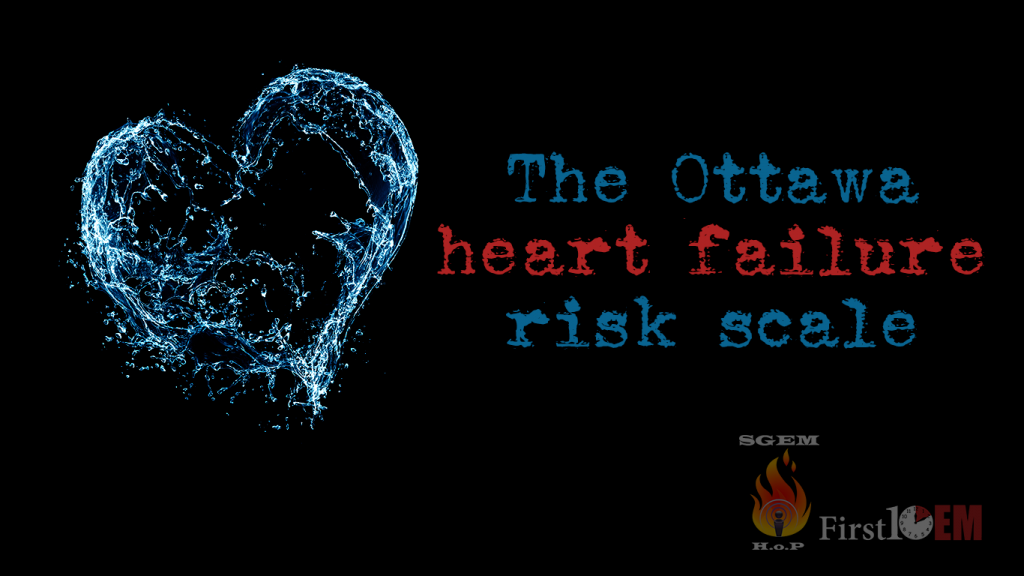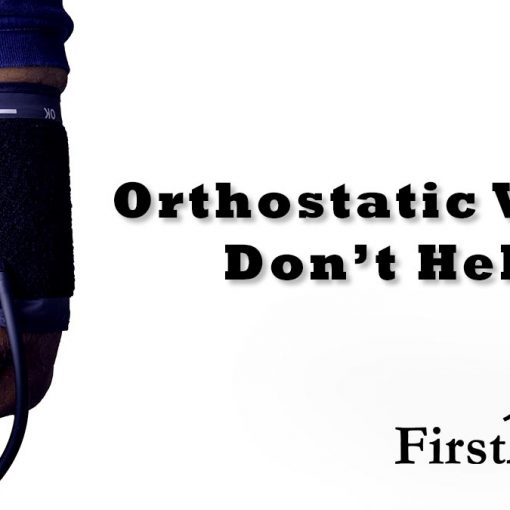A new episode of the SGEM hot off the press just went up. Ken and I spoke to Ian Stiell about his Ottawa heart failure risk scale.
Reference: Stiell et al. Prospective and Explicit Clinical Validation of the Ottawa Heart Failure Risk Scale, With and Without Use of Quantitative NT-proBNP. AEM March 2017
You can listen to the podcast and leave you comments on the SGEM: http://thesgem.com/2017/03/sgem170-dont-go-breaking-my-heart-ottawa-heart-failure-risk-scale/
Dr. Stiell thinks this decision tool is ready to be used right now. This is THE Dr. Stiell. You know: Ottawa ankle rule, Canadian CT head rule… a list that doesn’t end. One of the biggest minds in emergency medicine. That guy. So although my take is a little different, you might want to consider the source of your information when deciding for yourself.
This study is a multi-centre prospective observational cohort to validate this previously derived decision tool. They looked at adult patients with acute heart failure in the emergency department. The scale is used to predict serious adverse events. Here is the scale:

At face value, this score looks excellent. A score of 0 translates to a 2.8% risk whereas a score of 9 is almost a 90% risk. Those differences are both clinically and statistically significant. Also, except for BNP, the components of the score make sense, and are already things that I am asking about or measuring in my patients. However, I will not be using this scale clinically.
For a full critical appraisal of the article, have a listen the the SGEM episode. I just want to bring up 2 reasons why I don’t think this scale is ready for prime time.
#1) Including readmissions as serious adverse events: For this study, I think a composite outcome of “serious adverse events” makes a lot of sense. These adverse events are exactly what I worry about for my patients – except for one. Intubations, ICU admissions, MIs, and major procedures are things that I think my patients care about. But readmissions are not. If I send you home and a few days later you need to be admitted instead – but with no other complications (because MIs, intubations, and ICU admits would have already been caught in this data) – that is not a failure. It is ideal medical care. Because the only other option was to admit you on day #1. But if I sent you home, it wasn’t clear that you needed the admission. Nothing bad happened by delaying the admission. An unnecessary admission definitely could have caused harm (clots, nosocomial infections, unnecessary procedures, etc). Admitting 100 patients on day 1 just so 10 don’t have to be admitted later makes no sense at all.
#2) Without an RCT, we don’t know the true benefits and harms. This is true of all decision tools. The validation study gives us a sense of their sensitivity and specificity, but cannot tell us how they will actually impact patient important outcomes. Dr. Stiell is one of the best decision tool researchers in the world. Often we don’t get that final implementation study, but Dr. Stiell has performed many of these studies in the past, and plans to perform a similar study for the Ottawa heart failure scale. I will wait until I see that (which, unfortunately, will take a long time) before I start using this scale. Right now, this scale gives us a sense of the risk to our patients, but it isn’t clear that we know how to prevent the adverse events reported. Does a hospital admission really help these patients? Might it hurt? All we know is, as is demonstrated by their data, this score is very likely to result in more patients being admitted to hospital. I want to see an RCT demonstrating the true harms and benefits of using this score before I subject my patients to that.
That being said, the decision to admit CHF patients is highly variable, and this score might be valuable in some settings. It may even allow for lower admission rates in some settings. But I have always been taught to substitute “may not” for “may” any time I come across that word in EBM.
I still think this paper is worth looking at. I currently use most of the components of this scale when making my decision. (I don’t have access to BNP – although I can’t say that bothers me much). Personally, I think the walk test is the most valuable piece of information I have about most patients. If you aren’t including this in your evaluation of dyspneic patients, have a look at this paper and see how it performed.
So those are my thoughts for now. I am disagreeing with Ian Stiell, which seems like a silly thing to do. He knows research far better than I do. He has far more experience. And he essentially invented the decision tool. But until I see an RCT demonstrating benefit for my patients (and not just prevention of readmissions), I will continue to use my clinical judgement to make this decision.
Remember, this was an SGEM HOP paper, which means that your questions or comments could end up published in Academic Emergency Medicine. If you have any questions for Dr. Stiell, head over the SGEM and leave us a note!
Enjoy this kind of post? Check out other critical appraisals here.
Morgenstern, J. The Ottawa heart failure risk scale, First10EM, March 6, 2017. Available at:
https://doi.org/10.51684/FIRS.4050






2 thoughts on “The Ottawa heart failure risk scale”
Thanks Justin for helping cut the knowledge translation window down with this #SGEMHOP episode.